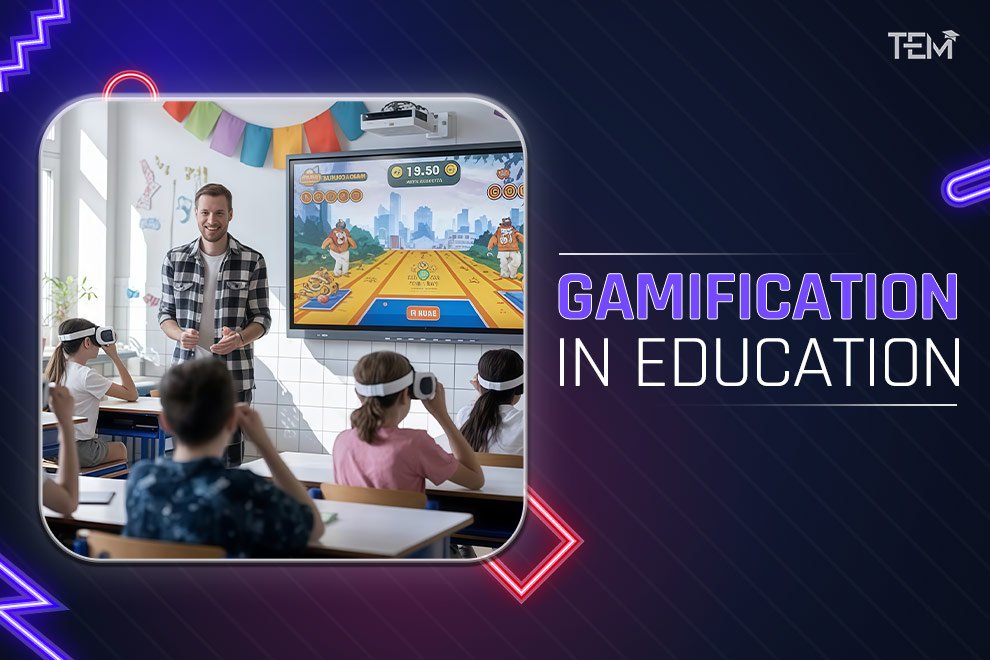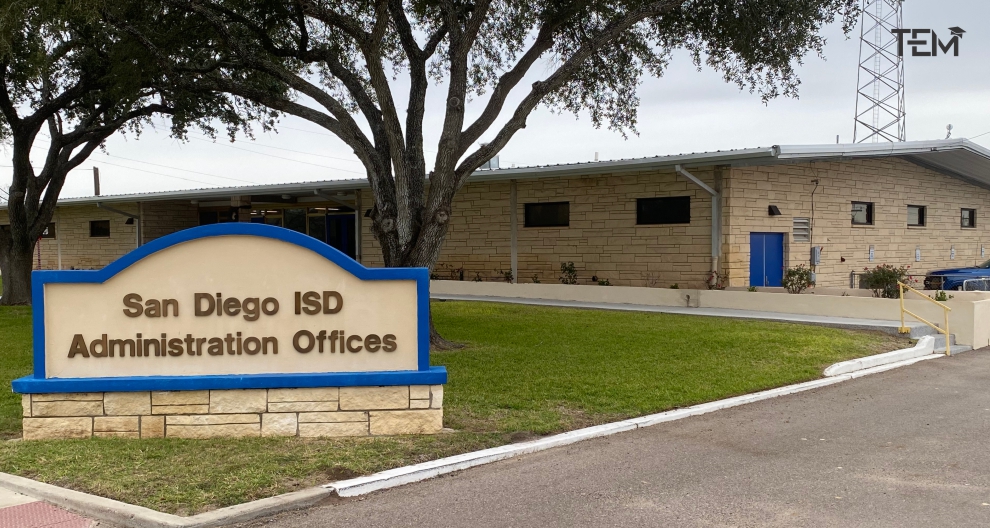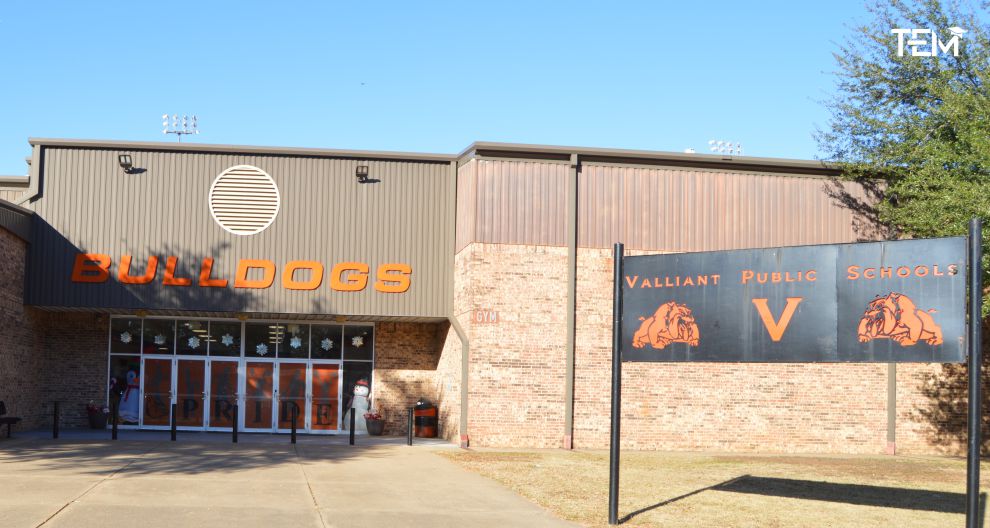Ever stared at a textbook, feeling your brain slowly turn to mush? We’ve all been there. In a world buzzing with addictive digital entertainment, the classic classroom often feels… well, a bit dull. This isn’t just a small problem; it’s a full-blown engagement crisis that hits everything from student motivation to how much we actually remember. But what if we could bottle the magic that makes games so captivating and pour it right into our lessons?
That’s exactly what gamification in education does! It’s a game-changing solution that taps into our natural love for play and achievement. By weaving game elements into learning, we can turn a yawn-fest into an epic quest. This guide is your map to understanding how this incredible approach is waking up classrooms, building vital 21st-century skills, and paving the way for real, lasting success. Let’s dive in!
Let’s Explore Everything About Gamification in Education
- What is Gamification in Education? (And, Crucially, What It Isn’t)
So, what’s all the buzz about? Simply put, gamification in education is the clever art of using game elements—like points, cool badges, and competitive leaderboards—in a learning setting. The whole point is to boost engagement and get students genuinely excited about hitting their goals. Think of it as making the process of learning feel like a fun, playful experience where students feel in control, competent, and connected.
But hold on, it’s super important not to mix this up with Game-Based Learning (GBL). They sound similar, but they’re quite different.
- Game-Based Learning (GBL): This is when you learn by playing an entire game. We’re talking about using something like Minecraft Education Edition to teach city planning or physics. The game is the lesson.
- Gamification: This is about sprinkling game mechanics into your existing lessons. For example, a history teacher might award ‘experience points’ (XP) for homework or ‘achievement badges’ for acing a quiz. The lesson is still about history, but it now has a fun, game-like layer on top.
And what about the Problem-Based Learning (PBL) Triad? This awesome concept—covering problem, project, and challenge-based learning—fits perfectly into gamification. It turns regular schoolwork into thrilling quests and missions, pushing students to think critically and get totally absorbed in solving challenges.
- The Psychology: Why Our Brains Are Hardwired for Gamified Learning
Ever wonder why this works so well? It’s not magic; it’s science! Gamification in education taps directly into our core psychological needs, and it’s all explained by a powerful idea called Self-Determination Theory (SDT). This theory says we feel motivated and happy when the three needs are met:
- Autonomy: We love having control! Gamification gives students choices, like picking which ‘quest’ to tackle first. This freedom makes learning feel like a personal adventure, not a chore.
- Competence: That feeling of ‘I did it!’ is priceless. Game elements like points, levels, and progress bars give instant feedback. Seeing yourself level up builds confidence and makes you want to keep going.
- Relatedness: We’re social creatures. Features like teams or ‘guilds’ create a sense of community. Working together or enjoying some friendly competition makes the whole experience richer and more fun.
And here’s the really cool part: the dopamine feedback loop. Our brain releases dopamine—the ‘feel-good’ chemical—not just when we get a reward, but even when we’re expecting one. Gamified systems are brilliant at this, constantly dangling challenges and progress trackers that keep our brains buzzing with positive vibes. As educational psychologist Dr. Alena Petrova brilliantly puts it, ‘The anticipation of progress and reward, expertly woven into gamified experiences, taps into our brain’s natural reward system, fostering sustained motivation.’ How cool is that?!
- How Play-Powered Education Makes Learning Super Fun!
Let’s be real, learning should be exciting! Gamification turns this idea into a reality. By using things like points, badges, and healthy competition, it transforms learning from something you have to do into something you want to do. It flips the switch from passive listening to active, dynamic participation. This isn’t just about external rewards; it’s about sparking that inner drive by making the learning journey itself genuinely enjoyable and satisfying.
- Picture a math class where kids are buzzing to solve tough problems because every right answer earns ‘gold coins’ for their custom avatar.
- Or imagine a history lesson where studying feels like gearing up for an epic ‘boss battle’ against a challenging test.
This simple shift in perspective makes all the difference. When students see their efforts rewarded, their motivation skyrockets. The positive feelings they get from achieving goals make them hungry for more knowledge. They’re not just learning facts; they’re actually enjoying the adventure of learning.
- How Gamification Learning Enhances 21st-Century Skills: Expert Tips
Gamification is so much more than just a fun time; it’s a powerhouse for building the skills everyone needs to thrive in the 21st century. We’re talking about crucial abilities like problem-solving, collaboration, and bouncing back from setbacks.
- Problem-Solving: Gamified lessons often throw challenges and quests at students that demand clever thinking, not just memorizing facts.
- Expert Tip: As Dr. Alena Petrova suggests, ‘Design multi-stage quests where students must research, analyze, and apply concepts to progress, rather than simply answering factual questions.’ She adds that these complex scenarios build analytical muscles far more effectively than static exercises.
- Collaboration: Many gamified activities are built for teams or ‘guilds.’ This gets students working together, sharing ideas, and combining their strengths to win.
- Expert Tip: ‘Implement team-based challenges where success relies heavily on communication and shared responsibility, giving points for peer support and effective group strategy.’ Take a page from Ms. Davis’s book: she runs group projects as ‘collaborative missions,’ where teams earn points for working together, creating a powerful sense of shared victory.
- Resilience: In a game, ‘losing’ is just a chance to try again. Gamification reframes failure as a natural, penalty-free part of learning, encouraging students to persist and learn from their mistakes.
- Expert Tip: “Integrate ’retry tokens’ or ’second chances’ for challenging assignments, emphasizing that mistakes are opportunities for growth, not end points.” Imagine a student failing a science quiz but earning a ‘Phoenix Feather’ to retake it. That’s how you teach the incredible value of persistence!
- How Gamification in Education Solves Key Learning Challenges
Gamification is like a superhero for some of the toughest challenges in education, turning struggles into moments of growth.
- Student Apathy: Feeling bored or disconnected in class? Gamification fights this head-on by injecting the excitement of points, badges, and epic stories into lessons. This makes learning feel purposeful and gives instant, satisfying feedback that reignites curiosity and participation.
- Learning Anxiety: The fear of bad grades and failure can be paralyzing. Gamification lowers the stakes by reframing mistakes as just part of the game. It creates a safe space to experiment, try again, and build resilience. This fosters a growth mindset, where learning is all about improvement, not perfection.
- Accommodating Different Learning Paces: The one-size-fits-all classroom can leave some students behind and others bored. Gamification to the rescue! It allows for personalized learning paths where students can move at their own speed. Whether it’s revisiting a tough concept or speeding ahead, the journey is tailored to them, keeping everyone perfectly challenged and engaged.
- A Teacher’s Playbook: How to Gamify Your Classroom (Step-by-Step)
Ready to bring this magic into your own classroom? It’s easier than you think! Here’s a practical playbook to get you started on this exciting journey.
- Define Clear Learning Objectives: First things first, know what you want students to learn. Is it mastering the periodic table? That’s your goal. This ensures your game serves a real educational purpose.
- Choose Your Core Game Mechanics: Pick your tools! Will you use points for tasks? Badges for skills? Leaderboards for competition? Think of Ms. Davis’s class, where students earn ‘Chemistry Conqueror’ badges. That’s the spirit!
- Develop a Narrative/Theme: This is the fun part! Create a story. A history class could be a ‘Time Travel Agency,’ with each unit being a ‘mission’ to the past. A great narrative makes learning feel like an adventure.
- Introduce Quests and Challenges: Ditch boring assignments! Turn them into ‘quests’ or ‘challenges’ with clear goals and rewards. A research paper becomes a ‘Historical Investigation Quest.’ Doesn’t that sound way more exciting?
- Implement a Progression System: Let students level up! As they earn points and complete quests, they can unlock new ranks or privileges. This mimics video game progression and is super motivating.
- Provide Regular, Meaningful Feedback: Use tools like Kahoot! or Quizlet for instant feedback. Knowing where you stand right away helps reinforce learning and guide improvement.
- Foster Collaboration and Social Interaction: Get students working together. They can form ‘learning guilds’ to tackle tough problems and earn rewards as a team.
- Balance Intrinsic vs. Extrinsic Motivation: While points are great, the ultimate goal is for students to love learning for its own sake. Design activities that are so engaging that the journey becomes its own reward.
- Iterate and Adapt: Listen to your students! Get their feedback and be ready to tweak your system. What works for one group might need adjusting for another. Flexibility is your friend!
- Real-World Examples: Gamification in Action
This isn’t just a theory; it’s happening right now in classrooms and beyond, with amazing results!
- Elementary School: Classcraft: Imagine a 5th-grade class completely absorbed in Classcraft. Students create avatars, earn Experience Points (XP) for good behavior and assignments, and even lose Health Points (HP) for breaking rules. It turns the entire school day into an epic role-playing game, promoting teamwork and positive behavior.
- High School: Kahoot! and Quizlet: Walk into a high school science class, and you’ll likely hear the buzz of a Kahoot! quiz. Students race to answer questions on their phones, fighting for a top spot on the leaderboard. With Quizlet, they turn studying vocabulary into interactive games. These tools make review sessions feel like a high-energy game show!
- Language Learning: Duolingo: Duolingo is the king of gamified learning. With its points, streaks, and levels, it has millions of users hooked on learning a new language. It breaks down a huge task into small, fun, game-like steps. That’s why it works so well!
- Corporate Training: It’s not just for kids! Companies use gamification to train their employees on everything from sales to compliance. A sales team might compete on a leaderboard to earn ‘deal points,’ turning work targets into a thrilling competition. It just goes to show how powerful these strategies are in any learning environment.
- How Gamification in Education Powers Up Student Success
The proof is in the numbers, and they are seriously impressive! Research shows that gamification has a massive positive impact on students.
- Increased Engagement and Motivation: Are you ready for this? A whopping 83% of people who get gamified training feel motivated. Compare that to the 61% who feel bored with regular training. That’s a huge difference! One study even saw major jumps in student participation and proactivity over five years.
- Improved Knowledge Retention and Academic Performance: Gamification helps students remember more and score higher. It’s true! A major analysis found that it can boost learning performance by 50%. Another study showed students in gamified activities scored up to 30% higher on tests. In pharmacy courses using tools like Kahoot!, students didn’t just get better grades—they were happier, too!
- Enhanced Skill Development: It’s not just about grades. Gamification helps build soft skills like collaboration and problem-solving. It creates a safe space to practice making decisions and working with others, which has been a huge plus in fields like medical education, where cooperation is key.
These results are undeniable. Gamification is a powerful strategy for creating better, more dynamic, and more successful learning experiences.
- How Gamification in Learning Sparks Curiosity & Genius
Gamification does something truly magical: it lights a fire of curiosity and builds a growth mindset. This is where real genius begins. By framing learning as an adventure, it inspires students to explore, to tinker, and to see challenges not as roadblocks, but as exciting opportunities.
- Imagine a history class morphing into an archaeological dig. Students ‘unearth’ facts and piece together stories like detectives solving a grand puzzle. This approach awakens a genuine desire to know more, pushing them to dig deeper just for the thrill of discovery.
- Elements like finding ‘hidden lore’ or unlocking ‘secret levels’ of knowledge appeal directly to our natural inquisitiveness, encouraging students to become independent explorers of information.
Even more importantly, the very nature of games—where you can fail, learn, and try again—instills a powerful growth mindset. Students learn that with grit and smart thinking, any challenge can be overcome. The focus shifts from just getting a good grade to the pure joy of discovery and mastery. As Dr. Alena Petrova wisely notes, “Gamification, when designed thoughtfully, transcends mere scores; it nurtures the invaluable habit of tenacious exploration, laying the bedrock for true intellectual curiosity.”
- The Ultimate Toolkit: Top Gamification Platforms & Apps for 2025
Ready to tool up? Here are some of the absolute best platforms and apps that are making waves in 2025.
- Kahoot!: The king of interactive quizzes. It turns reviews into high-energy, real-time games.
- Best for: Live reviews, quick checks for understanding, and firing up the classroom.
- Classcraft: A full-blown RPG for your classroom that gamifies behavior and academics.
- Best for: Long-term classroom management, building teamwork, and motivating daily tasks.
- Quizlet: The ultimate tool for mastering vocabulary and concepts with digital flashcards and games.
- Best for: Self-study, test prep, and a fun, collaborative game mode called ‘Quizlet Live.’
- Duolingo: The gold standard for gamified language learning, built on streaks, points, and progression.
- Best for: Self-paced language learning and building a consistent daily practice habit.
- Gimkit: Like Kahoot!, but students answer at their own pace and earn in-game cash to buy power-ups.
- Best for: Interactive quizzes that encourage strategic thinking in a super fun, competitive way.
- The Other Side of the Coin: Potential Pitfalls & Ethical Considerations
While gamification is amazing, being a true expert means knowing the potential downsides. It’s crucial to use it wisely.
- Overjustification Effect and Motivation: There’s a risk of students only caring about the points and badges, not the actual learning. If the game isn’t connected to a genuine interest, motivation can become hollow. This is called the overjustification effect.
- Unhealthy Competition: Leaderboards can be great, but if overused, they can create anxiety and demotivate students who are struggling. The goal should always be learning, not just winning.
- Equity Issues and Accessibility: We have to be fair. Not every student has the same access to technology or a quiet place to work at home. Gamified designs must be inclusive and accessible to students with different needs and learning styles.
- Danger of Poor Design Without Pedagogical Goals: This is a big one. Slapping points onto a boring lesson doesn’t work. The game elements must be thoughtfully woven into clear learning goals. Otherwise, it’s just a distraction. As Dr. Alena Petrova warns, ‘Gamification divorced from sound pedagogical principles is merely a distraction, not an innovation.’
- Ethical Concerns: We must be careful about student data and privacy. The design shouldn’t manipulate students but empower them. It’s a fine line between motivating and controlling, and we must always stay on the right side of it.
My Opinion
Let’s be clear: Gamification in education isn’t just a fleeting classroom fad. It represents a deep, meaningful shift in how we approach teaching and learning. By harnessing our innate human love for challenge, progress, and achievement, it transforms students from passive listeners into active explorers on a personal quest for knowledge.
This brilliant method fuels intrinsic motivation, builds the critical skills needed for the 21st century, and creates a flexible framework for truly personalized learning. When used with purpose and a solid understanding of its psychological power, gamification holds the incredible potential to spark profound engagement and unlock the intellectual curiosity burning inside every single student.
It is, without a doubt, preparing them for a future where the ability to learn and adapt is the ultimate superpower.
Here Are Some Future Impacts of Gamification We Can Not Ignore
The future of gamified learning is even more exciting than you can imagine! Here are five lesser-known impacts that are on the horizon.
- Neuro-adaptive Difficulty Scaling:
Imagine a learning system that reads your brainwaves! Future platforms will use neurofeedback from wearables to adjust the difficulty in real-time. If you’re feeling overwhelmed, the system will simplify the task to keep you in that perfect ‘flow state’ for maximum learning.
- Gamified Emotional Intelligence Training:
Get ready for games that teach empathy! Future gamification will heavily focus on social-emotional learning (SEL). Think multi-player quests that present ethical dilemmas or award ‘empathy points’ for understanding different viewpoints.
- Community-Built Curriculums as MMOs:
What if school curriculums were built like massive online games? Students, teachers, and even outside experts could co-create quests (projects) and expand the game world (knowledge base) together, creating a living, breathing educational universe.
- Credentialing through ‘Skill Trees’ and ‘Mastery Paths’:
Forget just a diploma. In the future, your skills could be displayed as a visual ‘skill tree.’ Mastering a concept unlocks a new branch, creating a detailed, verifiable map of your abilities that goes way beyond a traditional transcript.
- AI-Powered Personalized Narrative Generation:
AI will act as a personal storyteller for every student. It will create unique learning adventures—with custom characters, plots, and challenges—based on a student’s interests and progress, making their educational journey a deeply personal and motivating epic.
The future of learning is a shared adventure. If this guide sparked an idea or inspired you, don’t keep it to yourself. Share this blog with your friends, colleagues, and fellow educators, and let’s level up the world of education together!











